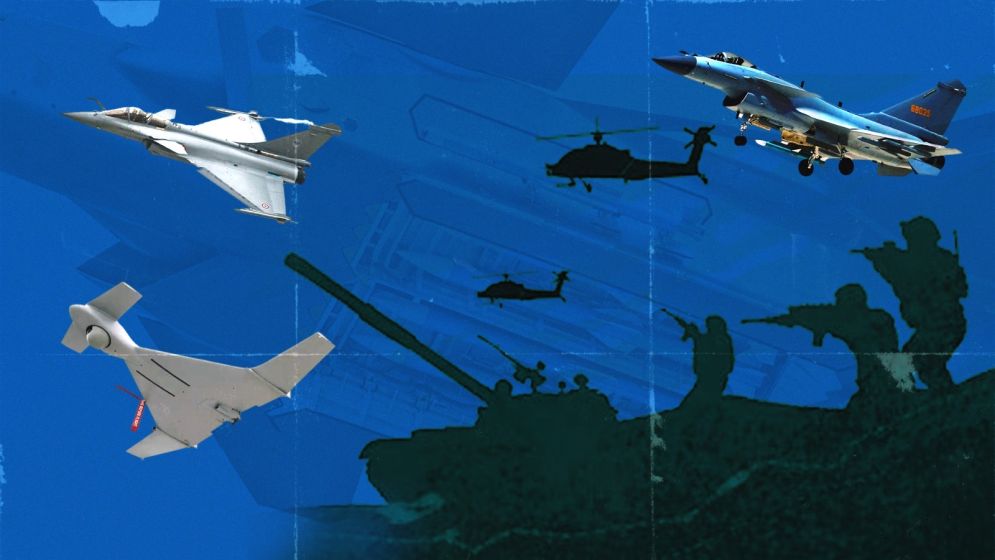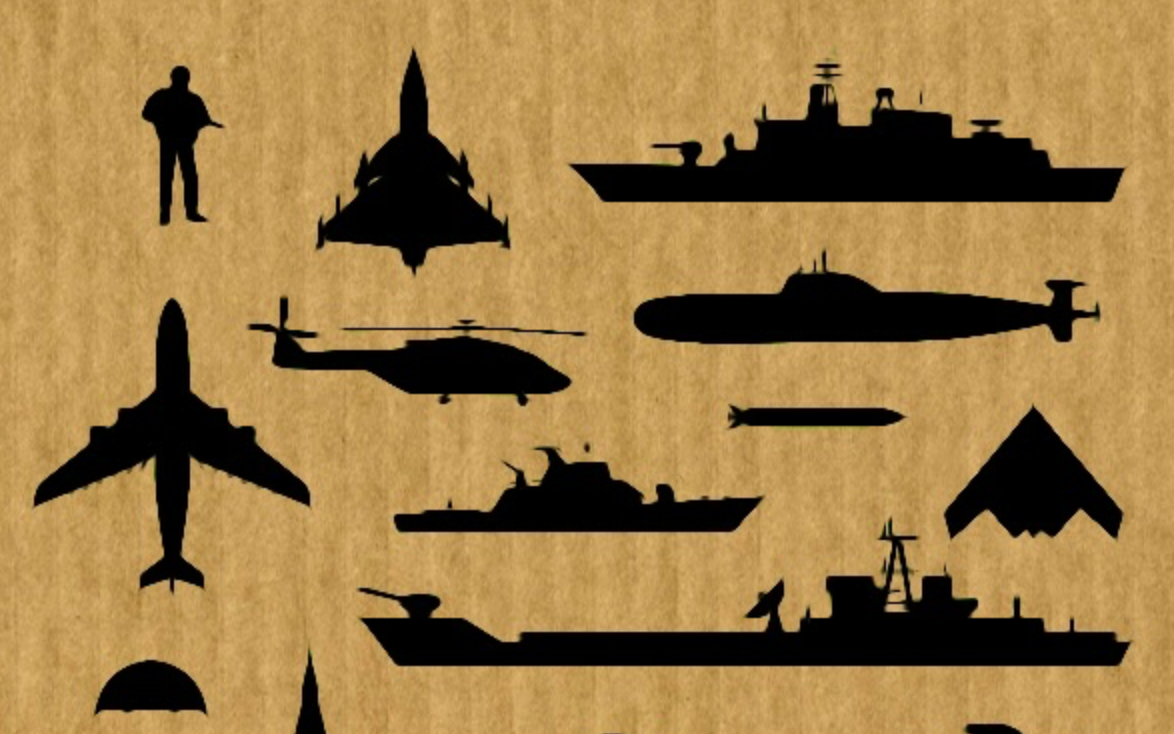The skies of South Asia may have just redrawn the map of global military influence

When India signed its $8.7 billion Rafale deal with France’s Dassault Aviation in 2016, the message was clear: New Delhi was done playing second fiddle in regional air power.
The Rafale was an emblem of ambition, influence, and technological parity for the subcontinental giant. That illusion probably just went up in smoke.
In what’s now being described by regional defense sources as a disastrous air engagement with Pakistan, India lost three Rafael jets–including BS-001, the inaugural Rafale EH aircraft of its fleet–along with a Sukhoi-30MKI, a MiG-29, and a set of major Israeli reconnaissance drones.
Pakistan’s J-10Cs, armed with Chinese PL-15 missiles, never even had to close in. The engagement happened at a distance, swift and surgical.
For India, the damage is not only tactical but symbolic. For its suppliers–France, Russia, and Israel–it’s a potential market crisis.
Dassault now faces the nightmare of having three Rafales from a fleet of just 34 eliminated in one operation. The jet, previously validated only in low-intensity theatres like Mali and Libya, failed its first encounter with near-peer adversaries.
Israel’s Harop drones fared no better. Pakistan claims it downed 25 of them, using both soft-kill jamming systems and hard-kill weaponry.
The wreckage, paraded in Karachi and Lahore, is now serving as a potent counter-narrative to Israeli drone invincibility–a narrative long sold across the Global South.
This was essentially a live-fire rejection of the West’s defense marketing. The Rafale wasn’t shot down by an F-16 or a Russian Su-35, but by a Chinese-built, Pakistan-assembled J-10C launching a missile faster and longer-ranged than anything in NATO’s operational arsenal.
Buyers are taking notes.
The immediate beneficiary is China. The PL-15, equipped with AESA radar and now combat-verified, no longer needs promotional brochures. Part of one was reportedly recovered on Indian territory–hard proof of its effectiveness.
Beijing doesn’t have to pitch the J-10C anymore. The battlefield has done it for them.

Other players taking notes
Turkey and Iran will be taking notes. Both aspire to become heavyweight exporters in the drone and next-gen fighter markets, and the sudden exposure of Israeli drone vulnerability will only fuel Ankara’s Bayraktar expansion and Tehran’s UAV ambitions.
Russia, too, takes a hit: the downing of a Sukhoi and a MiG only reinforces what many already suspect–that Cold War airframes, however upgraded, are no match for contemporary missile tech.
Meanwhile, for India, this is not just a battlefield failure but a political crisis.
The Rafale deal was already dogged by corruption allegations and fierce parliamentary scrutiny. Now, with BS-001–the first Rafale delivered–lying in ruins, the symbolism is inescapable.
It's a public blowback waiting to happen, especially with elections looming. Worse, Islamabad claims the engagement occurred over Pakistani airspace.
If true, India’s operational judgment and risk calculus will face serious internal and external questioning. The image of surgical precision that New Delhi has tried to cultivate since the 2019 Balakot strikes now looks deeply flawed.
This confrontation has done what years of expos and glossy sales brochures could not: it has dragged Western, Russian, and Israeli defense products into a real-time comparative trial–and they lost.
French fighters, Russian jets, and Israeli drones were picked off not by elite NATO forces, but by Chinese-built platforms operated by a regional adversary.
The PL-15, with its extended reach and Mach 5 speed, dominated the airspace. The MICA never had a chance. Rafales were effectively flying blind, in a kill box built for radar saturation and standoff attacks.
No amount of defense PR can offset what happened over Lahore and Karachi. That sky was not just a battlefield–it was a showroom. And the West’s best inventory just got shelved.

A shrinking window for the West
It was a hard reset for the global arms market, exposing the cost of complacency in military innovation.
The United States is not exempt. The much-vaunted AIM-120D AMRAAM, once the benchmark for BVR combat, now looks outdated next to the PL-15.
The AIM-260 JATM, Washington’s next-gen answer, remains stuck in limited production with no operational timeline in sight. That delay isn’t just bureaucratic inertia–it’s strategic failure.
The U.S. doctrine of stealth and stand-off engagement hinges on missile superiority. Without it, the F-35’s trade-off in maneuverability looks like a liability, not an asset.
Russia isn’t faring better. Its R-77M, rumored to mirror PL-15 features like dual-pulse motors and AESA guidance–possibly with Chinese input–remains unproven in combat. A scramjet version may be in development, but speculation doesn't win air battles.
At present, the only missile in this tier with battlefield validation is Chinese.
And buyers are watching. From Riyadh to Jakarta, from Cairo to Ankara, defense planners are drawing one conclusion: Chinese systems aren’t just cheaper–they work.
The J-10C paired with the PL-15 essentially dismantled expensive Western hardware flown by a major U.S. ally. That changes the equation. The premium once paid for Western reliability now looks less like investment and more like sunk cost.
India’s misjudgment has triggered a shift far beyond its own borders. The real fight is now taking place in procurement meetings, in recalibrated alliance strategies, and in the quiet reordering of defense priorities across the Global South.

A warning from the East
As a geopolitical analyst in Dhaka, I see this as more than an operational failure–it’s a rupture in the global arms order.
For decades, Western defense firms have sold prestige wrapped in performance, backed by legacy battlefield credibility. That narrative no longer holds. In one brutal hour over South Asia, the façade cracked.
The outcome was clear: systems sold as best-in-class failed under real pressure, taken down not by elite NATO air forces, but by Chinese-made J-10Cs operating within Pakistan’s airspace and using PL-15 missiles.
No dogfights, no close-range heroics—just a cold, calculated, beyond-visual-range takedown.
The implications are systemic. The PL-15, traveling at Mach 5 with a reach of over 200 kilometers, exposed the inadequacy of shorter-range systems like France’s MICA.
The Rafale–long positioned as a pinnacle of multirole capability–was rendered obsolete in minutes. Dassault’s premium branding now looks hollow. Israel’s Harop drones fared no better, neutralized en masse through both jamming and kinetic means.
What’s worse is the legal and ethical overhang. Reports indicate Indian strikes may have hit civilian infrastructure in Pakistan–a potential breach of International Humanitarian Law.
Combine that with the use of autonomous-capable loitering munitions like the Harop, and New Delhi’s operation enters murky legal waters.
If these systems acted without real-time human oversight, they edge dangerously close to the definition of Lethal Autonomous Weapon Systems, which remain a red flag in Geneva and The Hague.
Nonetheless, the skies of South Asia was a public demonstration that the old rules of global arms sales are breaking down.
The wreckage wasn’t just Indian–it was Western defense credibility collapsing under the weight of a new reality. India may try to contain the narrative, but the shift has begun.
The Global South is no longer buying promises. It’s buying proof.
—-
Md Sazzad Amin is an entrepreneur and an armchair political analyst

